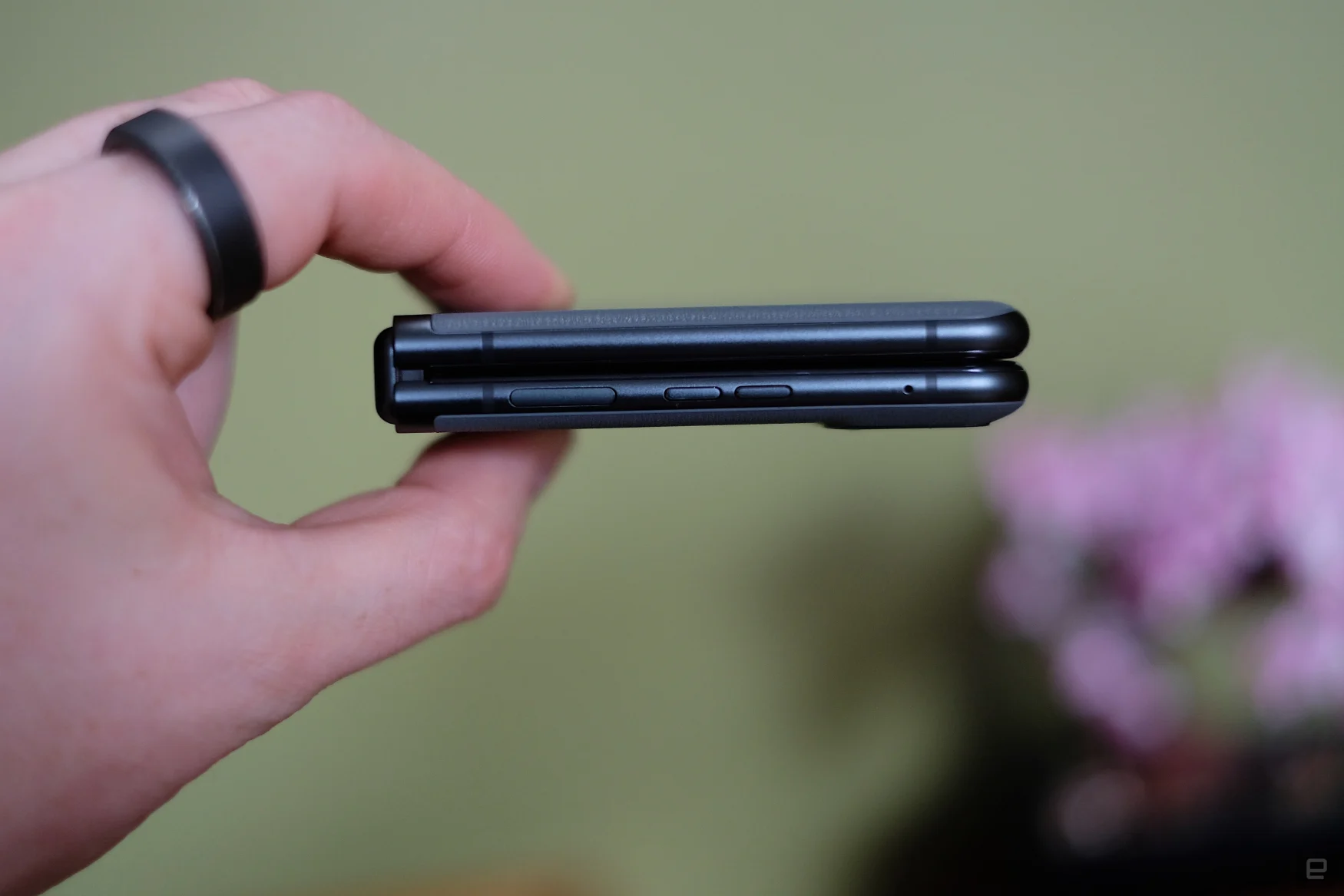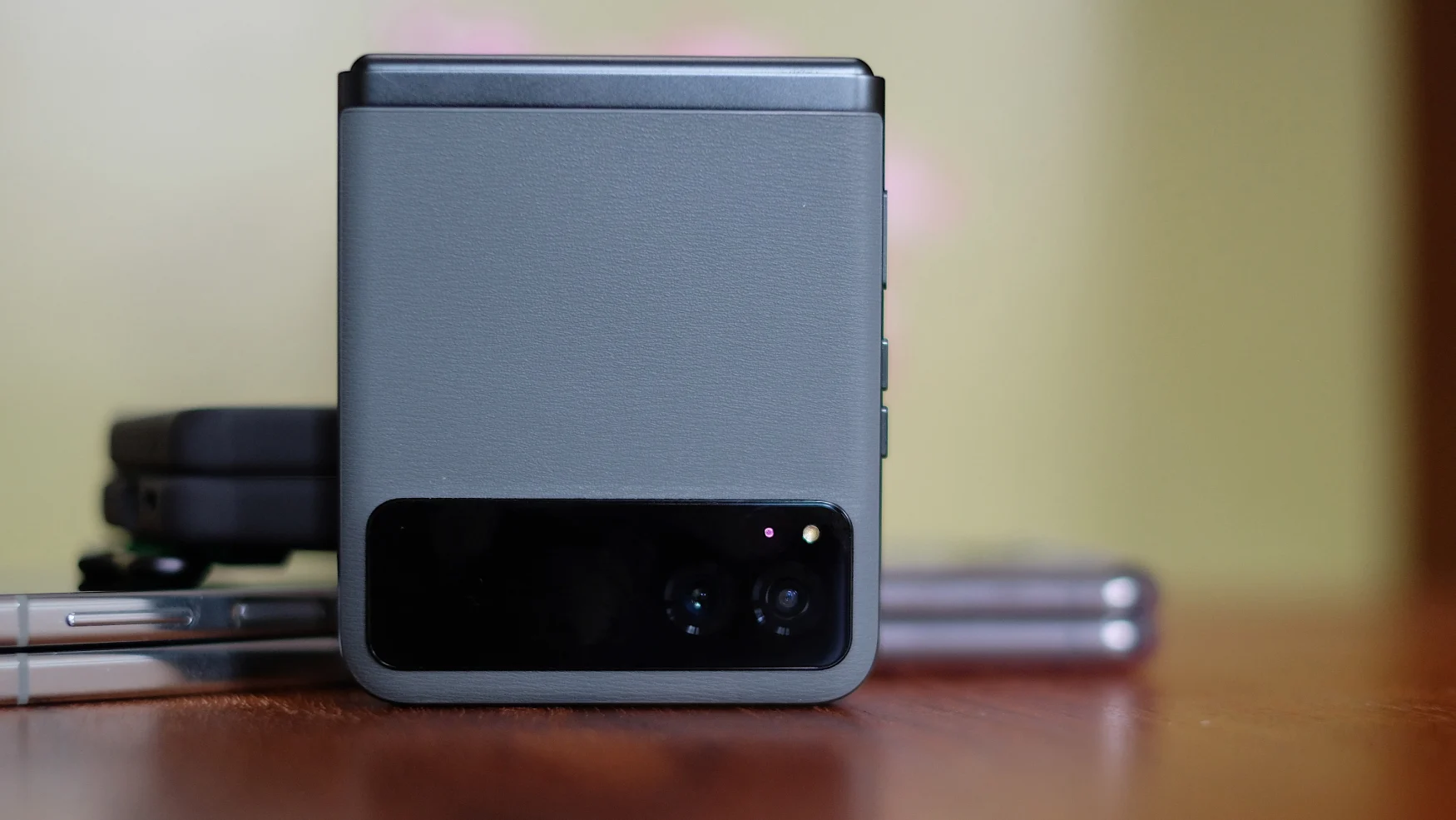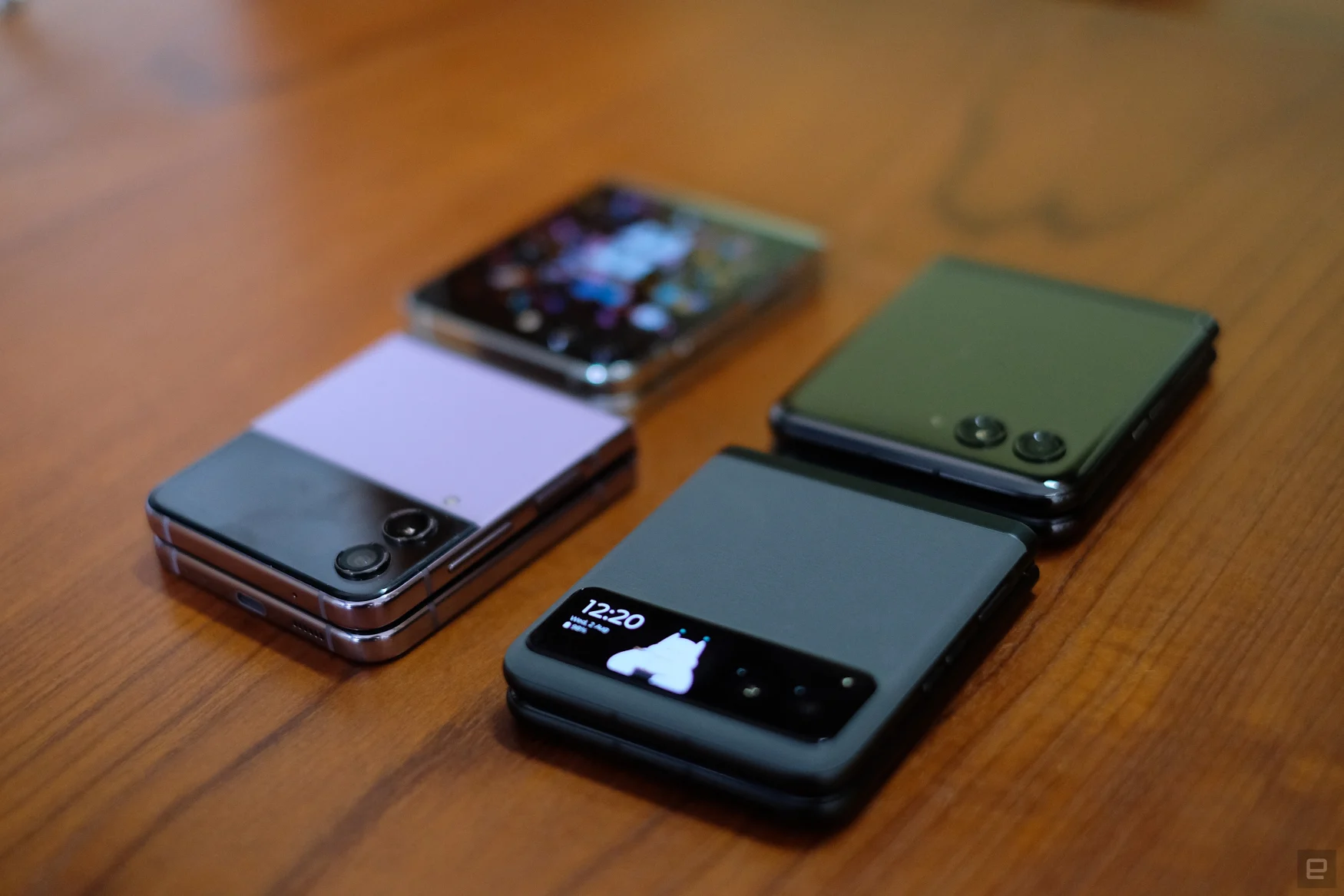Motorola Razr (2023) review: A midrange foldable that underwhelms
While Motorola’s pricier Razr+ beat Samsung’s Galaxy Z Flip 5 to the punch with its expansive external display, the Razr (named the Razr 40 in other regions like the UK) was pitched as a more budget-friendly foldable. For now, pricing and availability in the US haven’t been confirmed, but in the UK it’s priced at £800 (roughly $1,025) while the Razr+ retails at £1,050 in the UK and $999 in the US.
The new Razr is cheaper, but it’s also more limited. In screen terms, it’s comparable with foldable phones from a few years ago. But it has a bigger battery and seemingly better cameras. As the fanfare from Samsung’s Unpacked reveal dies down (and we get to grips with the Z Flip 5), the Moto Razr begs the question: What do you really get from a cheaper foldable phone?
Motorola Razr (2023)
Pros
- A cheaper foldable phone
- Decent battery life
- tactile soft finish
Cons
- Unremarkable external screen
- Underwhelming cameras
Design and displays
Let’s start with some Razr family resemblances. Both the Razr and Razr+ have the same body and internal flexible 6.9-inch display, and there is no more Razr ‘chin’ on either device. No corners have been cut on the foldable screen, with a crisp 413 pixels per inch and up to 1,400 nits of brightness. This is a flagship display. Internally, at least.
However, the cheaper Razr has a much smaller 1.5-inch external panel, which puts it somewhere between Samsung’s original Z Flip and the Z Flip 3. You know it will feel constrictive when it’s smaller than the first two Samsung flip smartphones. This is all exacerbated by the fact that its own sibling the Razr+ has a 3.6-inch external screen.

Subscribe to the Engadget Deals Newsletter
Great deals on consumer electronics delivered straight to your inbox, curated by Engadget’s editorial team. See latest

Please enter a valid email address
Please select a newsletter
By subscribing, you are agreeing to Engadget’s Terms and Privacy Policy.
The Razr’s panel takes up about 20 percent of the lower front of the device, with a 64-megapixel and 8MP camera duo to its right. It has an IP52 rating, which is better than nothing, but won’t protect against more than a weak splash or light rain.
I do like the Razr’s vegan, faux leather texture, so much so that despite my fear of breaking or damaging foldable devices, I risked using the phone without the hard shell case that came in the box. I particularly liked the grey-green sage colorway, too. Like the Razr+, Moto’s middleweight phone folds completely closed, with no gaps when looking at it from the side.

The small external screen is limited to basic phone functions. You can swipe sideways through your calendar, weather forecasts, while a drag up from the clock will show all your notifications. Swiping down gets to quick toggles for things like WiFi and Bluetooth. It’s functional, but a little dated. This is what we got with the very first flip smartphones; I need a little more. Even compared to last year’s Z Flip 4 — likely to be discounted to a similar price as this Razr now that its successor is here – Samsung’s device offers more to do and see on its external screen.
The Razr’s second screen is most helpful when you’re using exterior cameras for selfies. Double pressing the power button quick-launches the camera app, and you can tap to capture images with a timer, swipe up and down to switch between the ultra-wide and standard lenses and swipe sideways to swap between video, photo and portrait modes. You can even summon a cartoon character to distract children when taking photos, in both unfolded and folded modes.
The Razr’s 2,640 x 1,080 screen can refresh at up to 144Hz, a little shy of the Razr+’s 160Hz. That said, if you’re coming from smartphones with refresh rates of 90Hz or less, you’re still going to sense the improved smoothness. The panel is bright, responsive — it’s a smartphone screen. Anyone serving in the Crease Police, yes it’s there, but compared to older foldables, running your finger over it doesn’t feel like it’s testing the screen’s durability. Foldable hinges (and the screens covering them) continue to get better but if you’re looking for visible hints of a folding display, they’re still there.
Performance and software
With a Snapdragon 7 Gen 1 chip, the Razr shows its midrange hand a little. It’s not a flagship processor, but this is not a flagship foldable. I noticed the Razr lagged a little when I was trying to edit a lengthy video file, but it eventually managed to complete the task.
A pleasant surprise with this Razr was its 4,200mAh battery. This is much larger than the 3,800mAh battery in the Razr+ and the Galaxy Z Flip 4’s 3,700 mAh cell. In our video rundown test, it lasted just beyond 18 hours, a good three hours longer than the Razr+ and better than last year’s Z Flip 4.

The Razr can also fast-charge at 30W with the included adapter included (outside of the US at least). I was able to get the Razr to reach 100 percent in under an hour. There’s also support for slower 5W wireless charging, but alas, no reverse charging, if you were hoping to top up any wireless earbuds.
I’ve already noted the limited utility of the Razr’s external display, but software-wise it’s just not good enough. Customization options only extend to different fonts and colorways for the clock. It’s especially jarring given that we know Motorola is capable of more, thanks to the Razr+.
Cameras
One of the big spec differences between Motorola’s duo of foldables this year are the cameras. While the Razr+ has a pair of 12MP cameras like the Galaxy Z Flip series, the standard Razr has a 13MP wide-angle lens alongside a 64MP primary lens with optical image stabilization. Ah, so this will be where the Razr shines, right? Sadly, no.
Gallery: Motorola Razr (2023) camera samples | 7 Photos
Gallery: Motorola Razr (2023) camera samples | 7 Photos
In almost every shot I took, the Razr didn’t reach the standards of the Razr+ or even last year’s Galaxy Flip 4. Motorola’s claims of ultra-fast and accurate laser auto-focus don’t really bear out in reality, especially with video. The Razr twitches and struggles to keep consistent focus. I struggled to see many images where the 64MP sensor outperformed the pricier devices, either. I wasn’t getting notably more detail, in fact I was getting less. Turns out, unless you activate high-res capture mode (which is hidden away in the furthest reaches of the camera’s menu), the primary 64MP sensor is aggressively pixel-binned, stripping away detail without improving overall image quality all that much.
Wrap-up

Are foldables going to be the new smartphone normal? Doubtful. Motorola’s bid for a cheaper (if not that much cheaper) flip phone tries to broaden their appeal, but sadly misses the mark. Its external display simply lacks enough utility in 2023. And I’m not sure who is willing to spend this much money on a phone that’s already two years behind the curve.
However, Motorola has yet to announce pricing or a launch date in the US. If the Razr were to cost $800 or lower, which would be closer to a Galaxy S23 or iPhone 14, it could find an audience. But for most people intrigued by a foldable flip-phone, they would be better served hunting down a discounted Galaxy Z Flip 4.







